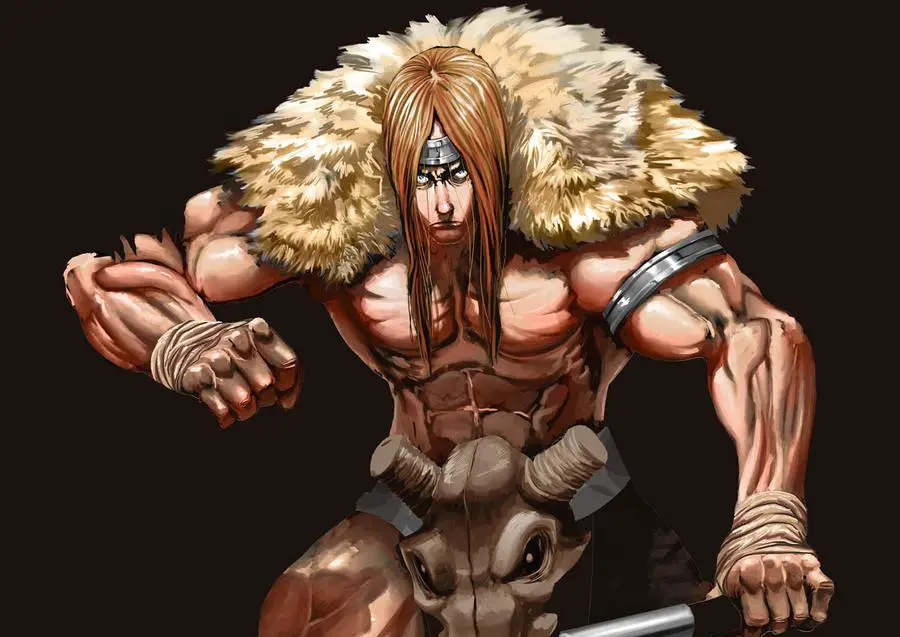Featured art “Octobre 1793, supplice de 9 émigrés” by unknown author. {{PD-US-unpublished}}.
This article contains affiliate links that add gold to our coffers.
There are many spells in D&D 5e that have similar spell descriptions and varying spell levels. Similar spells of higher level tend to gain incremental benefits: range, area, target count, duration, efficacy, and damage (to name a few). Divine magic can raise the dead, but it’s limited at lower levels. Low-level magic cannot raise a decapitated character from the dead, for example.
I have noticed an issue with these low-level resurrection spells like Revivify and Raise Dead. The time limit based on recency of death makes sense, but there are no game mechanics for when a character loses a limb, burns to ashes, melts in acid, snaps to pieces in a frozen burst, or falls victim to decapitation.
My advice includes mechanical suggestions for injuries, but I know there are many similar suggestions on the internet for interesting injuries in D&D 5e. My hope is to inspire you to not just use hitpoints as a resource but as a roleplaying signal for injuries, regardless of game mechanics you homebrew. This article pairs well with my article about making D&D 5e a more challenging game (playing on Hard Mode).
Caution
Players enjoy the power fantasy of D&D. If they feel weak or disabled, they might decide to play haphazardly until character death occurs, and they can roll up a new character. For this reason, know your audience and remember that the game has mechanics for regrowing limbs aside from the high-level resurrection spells. The Regeneration spell can restore a lost limb, for example. Allow player characters to seek remarkable healing for a price.
Just remember that players might hate being seriously injured. Try not to make the game less interesting or more frustrating for them.
Mechanics and Ideas for Grievous Injuries
Without a game mechanic for bodily harm beyond simply dying, why do these limitations exist? I suggest to you that these limitations should create an increased sense of peril for players. It’s typical for a character at higher levels to feel at ease in combat because even if one or two PCs are slain, someone else in the party can bring them back. I believe this should not be so for my style of D&D. Dungeon Masters like me should create a system for dismemberment that starts at being reduced to zero hitpoints and rendered incapacitated and unconscious.
Employing a system can prevent players from thinking you’re picking on them when their characters are maimed. If there is broadcasted mechanical reason for a PC to lose an arm, the player shouldn’t resent you or take the news personally. There will also be additional work to be done by player characters who are proficient in Medicine checks.
Annihilation
Characters’ bodies are obliterated if they die in a lava pit, acid bath, or other environment that would thoroughly destroy a body. One idea for how this could occur is when a character takes enough damage to kill them twice. Any circumstance that could be used to dispose of a body would naturally annihilate a character’s body if left to its fate. It may take time for a body to be destroyed. If you’re in doubt as to the state of a body and its belongings, roll 1d4:
- 1: The body and the entirety of the gear that the character had been carrying is destroyed except for anything that would feasibly survive the experience (like particular magic items).
- 2: The body is destroyed, but the character’s inventory is recoverable.
- 3: The body is partially destroyed, but the character’s inventory is recoverable.
- 4: The body and its inventory miraculously remain in tact.
Decapitation
Characters who are overwhelmed will likely be decapitated if enemies use weapons that could do so. The damage types that are likely to cause decapitation are bludgeoning, slashing, and thunder damage, but any damage type could accomplish a decapitation in the right circumstances (like piercing damage from a giant’s pike). I recommend describing a character losing its head when it is surrounded by enemies who quickly take the character down.
This recently occurred to a character in a game I played. He ended up surrounded by nasty monsters with swords. They quickly cut him down to zero hitpoints, and used the rest of their attacks to kill him outright while he was down. It happened so fast that I felt that I needed to describe a grievous end to the character. Though the party had the ability to cast low-level spells to raise a dead character, they lacked anything that could restore a decapitation. Forced to say goodbye, they buried the character and mourned.
This made for a memorable session, and it set the tone for the rest of the campaign. The players know that they can’t afford to be careless. Any DM who wants to set a similar expectation of high stakes for their campaign would do well to enforce harm that complicates resurrection.
Loss of Limbs
Players will be devastated to have their character maimed; some may even prefer to lose the character and roll up a new one. Make sure you are going to give them ways to make due with a lost limb, or eventually regenerate limbs or replace a body part with a prosthetic.
Giant creatures can do major damage with little effort. Use this idea when a monster that is two or more sizes larger than a character drops that character to zero hitpoints; if the damage dealt to a downed character has a surplus of twenty or more damage, have the downed character make a Constitution saving throw with the DC equal to half of the surplus damage. On a failure, roll 1d10 to determine which of the character’s body parts has been removed:
- 1: Favored Arm
- 2: Less-favored Arm
- 3: Leg
- 4: Foot
- 5: Hand
- 6: Finger
- 7: Thumb
- 8: Nose
- 9: Eyeball
- 10: Ear
The Artificer class is able to create magical prosthetics to replace limbs. There are also homebrew items from sources like the Griffon’s Saddlebag to find cool, balanced magic item ideas that involve prosthetics.
Lingering, Less-Evident Injuries
Exhaustion is a mechanic that easily covers a multitude of injuries and medical conditions. Player characters may receive injuries that essentially cause them to be exhausted until they can recuperate. Here are my suggestions for injuries and conditions, and how much exhaustion may be warranted in parentheses as long as they can long rest with adequate sleep and nutrition (I am not a doctor, this is not medical advice):
- Dehydration (1)
- Starvation (1)
- Concussion (3)
- Temporary Insanity (1)
- Blood Loss (2)
- Broken Bones and Internal Bleeding (3)
- Ruptured or Torn Tendons (3)
Amputation and Medicine Checks
Successful Medicine checks may not result in immediate restoration of a character’s health. Allies who have sustained traumatic injuries may yet have their bodily extremities attached, but a medical check may warrant amputation. When a player attempts a medicine check outside of combat to heal an ally whose arm is now jelly after being squashed by a giant’s club or withered by a Blight spell (for examples), the right move may be to require an amputation.
Characters who have been reduced to zero hitpoints and were then attacked while hoping to stabilize need to roll 1d100 for a percentile result:
- 1-10: The character cannot regain more than one-fourth of its maximum hitpoints and cannot benefit from long or short rests until a destroyed limb has been amputated. The character also gains three points of exhaustion.
- 11-20: The character cannot regain more than half of its maximum hitpoints and cannot benefit from long or short rests until a destroyed limb has been amputated. The character also gains three points of exhaustion.
- 20-30: The character cannot benefit from long or short rests until a destroyed limb has been amputated. The character also gains two points of exhaustion.
- 31-80: The character will make a full recovery with rest and healing, but the character gains two points of exhaustion.
- 81-90: The character will make a full recovery with rest and healing, but the character gains one point of exhaustion.
- 91-100: The character will make a full recovery with rest and healing. They got lucky this time.
An amputation can be done safely if the attending character has a Healer’s Kit and succeeds on a DC 10 Medicine check. The DC increases by one for every level of exhaustion the patient already has. A successful amputation results in a character losing the limb, but otherwise beginning to mend. Whether the amputation is successful or failed, the surviving character gains three points of exhaustion (maximum of five levels total). If the amputation attempt is failed, the amputee character drops to zero hitpoints and begins rolling Death Saving Throws with disadvantage. The amputee is then considered to be rapidly dying and cannot regain hitpoints or consciousness if stabilized. The surgical amputation still results in the loss of the limb. The amputee, if stabilized, will awaken in eight hours with five levels of exhaustion, at which point it can regain hitpoints again.
This mechanic can be used for procedures that don’t involve amputation. The DC of the Medicine check can be raised or lowered depending on the extent of the injury.
Conclusion
The mechanics I suggested can be ignored or adopted, but the important point I wish for you to take away from this article is that you can increase the stakes of any fight by letting your players know that healing and resurrection isn’t going to enitrely fix every situation without drawbacks or added challenges. Dungeon Masters who are struggling to create tension can use injuries to achieve their goal.
Have you experienced grievous injuries in your D&D games? I’d love to hear about the best and worst stories, so please cast Sending in the comments section below (but you can use more than 25 words afforded by Sending). Check out our Flutes Loot YouTube channel if you like videos that discuss D&D and TTRPG topics. Before you go, browse other topics here on flutesloot.com. We just passed our one-hundred-article threshold, so we have plentiful content for you right here. Thank you for reading today! I hope you’ll bookmark us for the future.




